Easy Pickin's! Where?
Easy Pickin's! Where?
By Bill Willis
August 16, 2017

Raccoons (also known more formally as Procyon lotor) have become regular visitors to open trashcans and dumpsters on campus. What’s the attraction? Could it be easy access to food scraps?
The raccoon's diet typically includes items such as green plants, seeds, and fruits, as well as insects, aquatic species, and small vertebrates. When the usual fare runs low, the raccoon may rely on humans or wildlife for other sources.
Raccoons can get aggressive if approached – play it safe and always allow them an escape route. On campus, extra effort needs to be made to ensure that no food is left lying around, dumpsters are closed and trashcans emptied regularly. Whatever the reason for the nightly visits, remember that raccoons are unpredictable wild animals and, as such, should be respected and left alone.
Hunting for Turtle Eggs
Some of our NIEHS raccoons have been caught on camera in the Memorial Garden. They are the major predators of freshly laid turtle eggs. Activity increases from April to early July as turtles come ashore to lay their eggs. Last year was a bountiful one with over fifty nesting sites in the Memorial Garden.
The scent of fresh eggs and turtle urine are lures. Holes in the ground with turtle egg shell fragments lying about are a sure sign that a racoon was near.
Raising Young
Raccoons mate in late January through late spring with a two-month gestation. A male will mate with multiple females, but a female will only mate with one male. Females will actually fear males are when it’s time to deliver as males can kill newborns. Two to four young are born and will remain with the mother for a year.
Often the mother will seek the security of a house attic or other shelter to rear her young. Interfering can lead the mother to become aggressive. Getting the family out of the attic requires a little trickery, as both mother and young should be removed at the same time. The best method is to apply male raccoon scent in the attic and access point. The female, fearing that a male is near, will move her young. Once gone, the access point should be closed. Contact a Wildlife Specialist to assist you in removing this crafty animal from your home, especially if young are present.
If the raccoon is seen during daylight hours and is acting weirdly, contact local authorities. Do not attempt to catch, since rabies may be causing this behavior. Err on the side of caution.
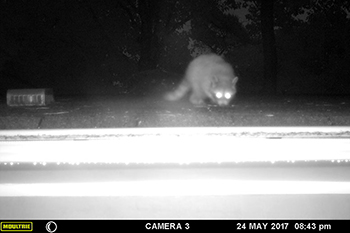
(Photo courtesy of Bill Willis)
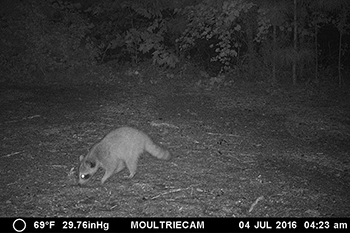
(Photo courtesy of SET/WAIT)
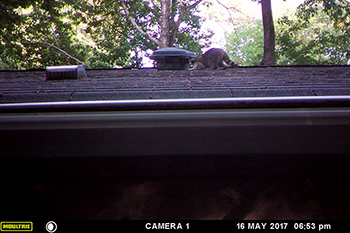
(Photo courtesy of Bill Willis)
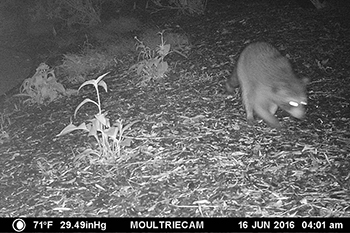
(Photo courtesy of SET/WAIT)
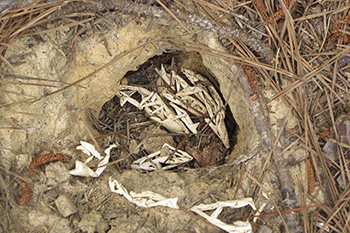
(Photo courtesy of Bill Willis)



